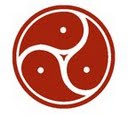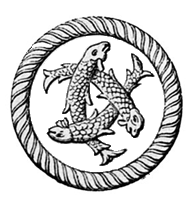Home › Forum Online Discussion › General › Sacred Words of Liberation (picture & song worth 10,000 words)
- This topic has 4 replies, 2 voices, and was last updated 10 years, 4 months ago by
c_howdy.
-
AuthorPosts
-
December 31, 2014 at 11:26 pm #43646
Fool Turtle
Participant

Sacred Words of Liberation:
Sacred Words Of Liberation – Lama Gyurme and Jean-Philippe Rykiel
SENTiENT333
…
She screams and he cries his heart out all day –
yet her voice does not grow hoarse,
so complete is his natural harmonyTo perceive this harmony is common sense,
applying common sense is our natural destiny.…..What is not the Natural Way always comes to an untimely end.
— verse 55, Tao Te Ching


January 2, 2015 at 4:05 am #43647Fool Turtle
Participant
SACRED WORDS OF LIBERATION

Purification

The Buddha teaches that suffering is not a random phenomena, no more than it is handed out by a superior divinity. In reality, individuals are responsible for their own destiny, reaping in one life the product of what their deeds in a previous life [or, perhaps, previously in lifemy thought] have implanted in the mysterious depths of their consciousness.
Just like a skilful psychoanalyst seeks to clear the subconscious of his patients, the Buddha has provided methods to purify the spirit of the negative imprints brought forward from past lives and which carry suffering. Lama Gyurme here recites two incantations (the Vajrasattva mantra and the Liberation Sutra mantra) especially dedicated to this purpose.

From this primordial triangle comes all figures, shapes, formsall numbersthe magic of manifestation.

The Triple Yin Yang is also known as the Wheel
of Enjoyment. It symbolizes the trinity of Buddha,
Dharma and Sangha; The Three Jewels;” and overcoming the “Three Poisons.”January 2, 2015 at 4:12 am #43649Fool Turtle
Participant
Vajrasattva mantra
Vajrasattva mantra of 100 syllables
A symbol of the minds inherent purity
Vajrasattvas name (Tib. dorje sempa) means diamond being. He represents the innate purity of the mind.
You can imagine your mind as being like a sky through which clouds pass. The clouds come and they go, but the sky remains untouched. The sky is inherently blue and clear, and although its blueness and clarity can be obscured it can never be destroyed. The clouds are like the greed, hatred, and delusion that pollute the mind. Because of the transient nature of these mental states, they cannot be said to be an inherent part of the mind. They may obscure the minds inherent awareness and compassion, but those qualities are never absent.
The meaning of the mantra
The mantra means:
Oṃ Vajrasattva! Preserve the bond!
As Vajrasattva stand before me.
Be firm for me.
Be greatly pleased for me.
Deeply nourish me.
Love me passionately.
Grant me siddhi in all things,
And in all actions make my mind most excellent. hūṃ!
ha ha ha ha ho!
Blessed One! Vajra of all the Tathāgatas! Do not abandon me.
Be the Vajra-bearer, Being of the Great Bond!
āḥ (hūṃ phaṭ)Explanation of the mantra
Vessantara, in Meeting the Buddhas, suggests that in the first line (Oṃ Vajrasattva! Preserve the bond!) we are acknowledging our alienation from our true nature by calling upon Vajrasattva to preserve the bond, or samaya, whereby we do the Vajrasattva invocation regularly and Vajrasattva for his part responds by bestowing upon us the fruits of the practice. This bond represents a mutual commitment on the part of the practitioner and Vajrasattva. In psycho-spiritual terms, if you strive to realize your own innate purity, your innate purity will strive to manifest itself from the depths of the unconscious.
We then (As Vajrasattva stand before me) call upon Vajrasattva as a spiritual friend (kalyanamitra), to manifest in our meditation and in our lives.
We entreat Vajrasattva (Be firm for me) to be with us constantly. We are endeavoring to constantly come back to recognizing the minds true nature.
Be greatly pleased for me. Deeply nourish me. Love me passionately. Vajrasattva becomes more like an intimate friend or even a lover, and is no longer just a protector. Hes someone who knows us deeply and cares passionately for us. He is our own deepest nature, so at this stage in the mantra were experiencing a reunion with ourselves. In the words of the poet Derek Walcott, You will love again the stranger who was your self.
Grant me siddhi in all things, And in all actions make my mind most excellent. We now embody the qualities of Vajrasattva himself, and so to some extent we have become him. Siddhi is a Sanskrit word that literally means perfection, accomplishment, attainment, or success, and it refers to spiritual power attained through practice.
Ha ha ha ha ho! This is the joyful sound of liberation. These five syllables are also said to represent the five Buddha families, which are all emanations of Vajrasattva.
Blessed One! Vajra of all the Tathāgatas! Do not abandon me. Having experienced the innate purity of the mind, we aspire always to stay in touch with it. The Tathāgatas are the Buddhas, and the Vajra of all the Tathāgatas is the innately pure nature of the Awakened mind.
Be the Vajra-bearer, Being of the Great Bond! This suggests that we are imploring Vajrasattva to be means for and path to Enlightenment for all beings. He is the vajra-bearer (the representation of Awakening for all sentient beings.
According to Vessantara, the syllable hūṃ is added to the mantra when someone has died, and the syllable phaṭ is added in order to subdue demons. Without the hūṃ and the phat the mantra has exactly 100 syllables.January 2, 2015 at 4:14 am #43651Fool Turtle
Participant
The Great Liberation Sutraby Bro. Tan Kong Sing

History
The Great Liberation Sutra said by the Buddha had the origin in Tibet and was later introduced into China. The early translator was not traceable. The sutra is the mother of Buddhas, the great way for the Bodhisattvas. The spiritual and proven power of the sutra had been established, particularly in repentance and eradication of offences. The merit had wide claims in Tibet among the Sanghas, the recitation of the dharani mantra is also highly regarded. Indeed it is rare to know the Buddha and recite the sutra, through thousands Kalpas. Thus, without good roots, developed in the past lives, we are unable to perceive this Great Liberation Sutra to date. The great liberation sutra is upheld and cultivated by Buddhas in the past, present and future in ten directions.
Definition
The sutra is likened earth, harbours cleanliness, as well as dirt, good and evil.
The sutra is likened water, cleanesed all particulates and dirt.
The sutra is likened fire, burns all afflictions, unclean and evil.
The sutra is likened wind, blow away particulates of unclean and evil.
The sutra is likened sun shines upon and removes darkness.
The sutra is likened empty space, accomodates good and evil.Cultivation
To believe and respect the sutra is to acquire Buddhas wisdom and nature. To cultivate the sutra is like heavenly gods always see the buddhas, observe the buddhas, turn the Dharma wheel, sit in the way place, and restores benefit upon unlimited livings beings. To uphold the sutra, respectfully recite and bow to the buddhas and Bodhisattvas, this life time is peaceful, will not encounter any evil. Protection is obtained from the heavenly gods, Dharma protectors, gods roaming the earth and its surroundings. The cultivators will not see the evil, meet evil people and demons will not harm them. The place they live, places they travel to will not be hazardous. They will always see good things.
The sutra is the mother of the Buddhas, way of the Bodhisattvas, eyes for the sound-hearers, house in the heaven. It bestores unlimited benifits to be upheld and propogated in heaven and on earth.
Appendix
Dharani Mantranamo buddhaya namo dharmaya namo sanghaya a dan tidah ra ni tadyatha a ka sha ni ba bi ni sarva dharma ni va ni i sha ma da pi pa sha na vimalasuparri dharma ni kha na va ra ru ni ca ya tamle cale huru huru shi vite mantra mantrah svaha
January 12, 2015 at 8:42 am #43653c_howdy
ParticipantThe Buddha then told the Bodhisattva Constellation-King-Flower Once, as many eons ago as there are grains of sand in limitless Ganges rivers, there was a Buddha by the name of Virtue Pure and Bright Like the Sun and Moon, Thus Come One, One Worthy of Offerings, One of Right and Universal Knowledge, One Perfect in Clarity and Conduct, Well-Gone One Who Understands the World, Unsurpassed Lord, Regulating Hero, Teacher of Humans and Gods, Buddha, World Honored One. That Buddha had eighty kotis of great Bodhisattvas, Mahasattvas, and a great assembly of Hearers equal in number to the sand grains in seventy-two Ganges Rivers. His life span as a Buddha was forty-two thousand eons. The life spans of the Bodhisattvas were the same. In his country there were no women, hell-beings, hungry ghosts, animals, or asuras, and so forth, and also no difficulties. The ground was as level as the palm of ones hand, made of Vaidurya, adorned with jeweled trees, covered with jeweled nets, and hung with beautiful banners. It was surrounded everywhere with precious vases and censers. There were terraces made of the seven gems, one terrace for each tree, the trees being separated from the terraces by a distance of an arrows flight. Beneath each tree sat Bodhisattvas and Hearers. Upon each of the terraces were hundreds of kotis of gods playing heavenly music and singing praises to the Buddha as an offering.
-http://cttbusa.org/lotus/lotus23.aspSorry for my broken English.
My idea is here simply that one shouldn’t treat let’s say for example Buddhist sutras like just any kind of ordinary texts, but I also personally cannot see any book being in some way too sacred to be inviolable.
Very important would be that one doesn’t develop any kind of sentimental attachment towards such things, but still these might be very useful and beneficial.
When one has identified something worth more deeper inspection, material is to try to determine if one has already right kind of methods available to oneself to advance in such a studies.
Of course with Taoism important would be to start to study Chinese language.
Also although in the end for example with taijiquan the practice itself counts, one can also see that already pedagogically immediately very much is lost when names of the forms are just casually translated and more and more meaningless noise is introduced.
With mnemonics in it’s various forms it’s real problem in these kind of conditions because so much information is not only available, but one is really forced to try to ingest all that rubbish.
HOWDY
https://www.youtube.com/watch?v=IasOkulcDQk (yukiomishimanationalism)
https://www.youtube.com/watch?v=1Bi2YA_r-QQ (yukiomishimadeathwish)
-
AuthorPosts
- You must be logged in to reply to this topic.

